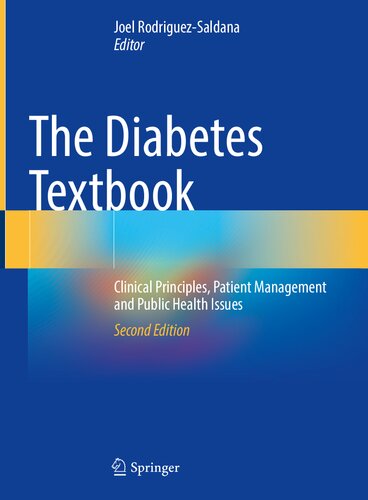

Most ebook files are in PDF format, so you can easily read them using various software such as Foxit Reader or directly on the Google Chrome browser.
Some ebook files are released by publishers in other formats such as .awz, .mobi, .epub, .fb2, etc. You may need to install specific software to read these formats on mobile/PC, such as Calibre.
Please read the tutorial at this link: https://ebookbell.com/faq
We offer FREE conversion to the popular formats you request; however, this may take some time. Therefore, right after payment, please email us, and we will try to provide the service as quickly as possible.
For some exceptional file formats or broken links (if any), please refrain from opening any disputes. Instead, email us first, and we will try to assist within a maximum of 6 hours.
EbookBell Team

4.8
104 reviewsThe Diabetes Textbook: Clinical Principles, Patient Management and Public Health Issues (2nd Edition) addresses diabetes from a comprehensive, multidisciplinary perspective. Its purpose is to integrate state-of-the-art information on diabetes from specialists in various disciplines, including epidemiology, public health, pathophysiology, non-pharmacologic and pharmacologic treatment, patient support, acute and chronic complications, new and unproven therapies, and prevention.
The main benefit of “The Diabetes Textbook” is its integrative approach. The book is therefore intended for three main types of readers: 1) physicians and health professionals seeking a comprehensive approach to diabetes; 2) those with previous expertise in a specific professional area who want to expand their knowledge; and 3) those interested in learning about topics not previously covered, who will find the contents of “The Diabetes Textbook” both enriching and innovative.
The Diabetes Textbook is intended for a broad readership, including professors of medicine and related disciplines (nursing, nutrition, psychology); general physicians; internists and specialists, e.g. in ophthalmology, endocrinology, cardiology, obstetrics and gynecology, pediatrics, geriatrics, epidemiology and public health.To address these readers’ needs, the second edition is divided into the following eleven sections: 1) Magnitude of the Problem from an Individual and Social Context, 2) Diagnosis, Classification and Mechanisms of Disease, 3) Global Experiences in Diabetes Care, 4) Basic Components of Management: Patient-Centeredness, Evidence-Based Medicine, and Outcomes, 5) Resources of Support for Persons with Diabetes, 6) Drug Therapy, 7) Cardiovascular Risk Factors, 8) Acute Complications, 9) Chronic Complications, 10) Diabetes in Special Populations, and 11) Novel Therapeutic Approaches: Evidence-Based and Non-Proven, and Diabetes Prevention.